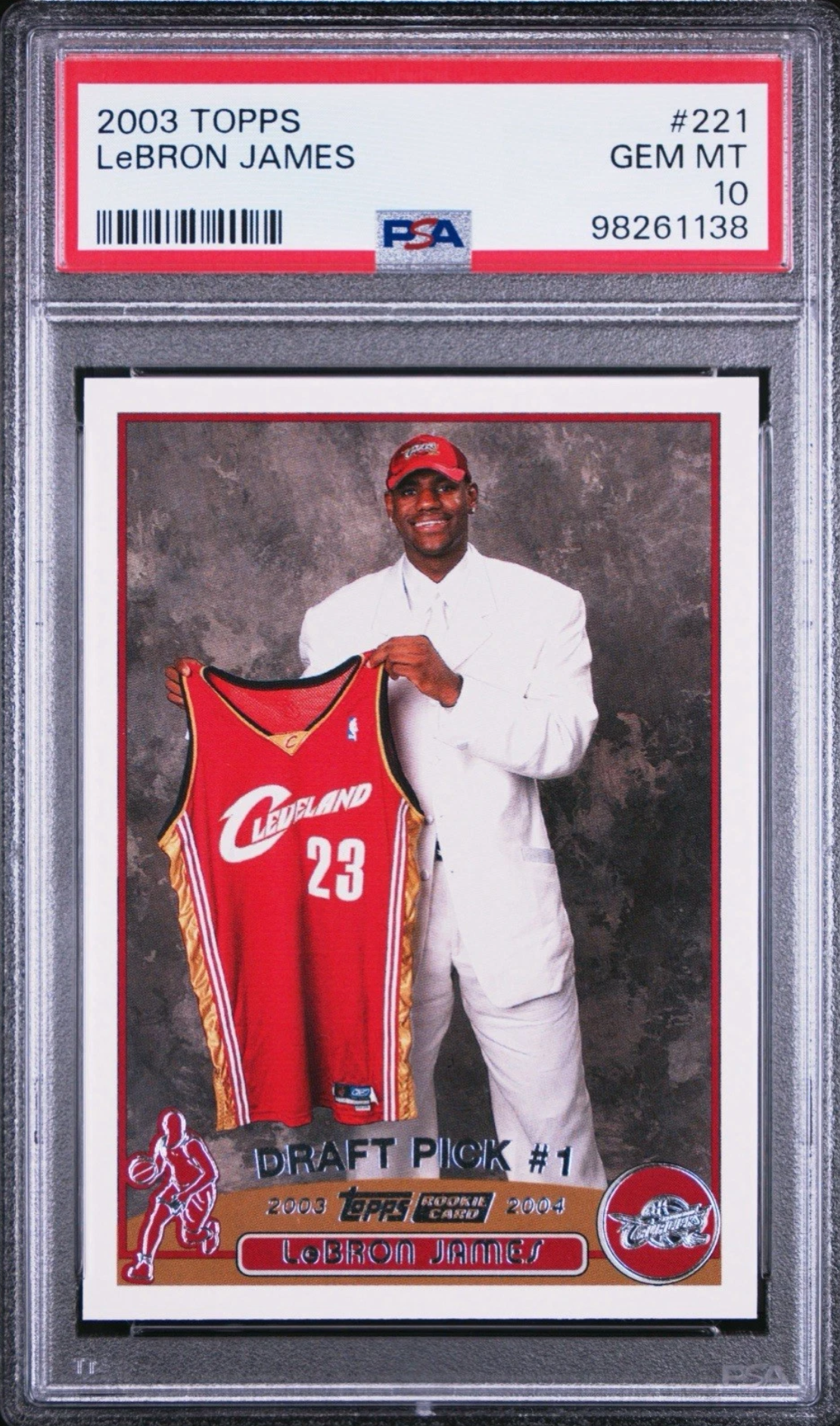In the fast-paced world of sports card collecting, few items have managed to captivate the community quite like the 2003 Topps LeBron James rookie card, famously catalogued as #221. This particular cardstock has transformed over the years from a simple collectible into a symbol of nostalgic and contemporary allure, pulling both seasoned collectors and newcomers into its orbit with seemingly magnetic force. But what really is it about this specific card that keeps it hovering at the center of the collector’s universe?
This card is not one of the gaudy, shiny chrome editions that’s the equivalent of a red carpet dress, nor is it an ultra-rare edition that demands a small fortune for its ownership. Instead, the Topps base, with its traditional paper feel, satisfies a niche all its own. For those venturing back into the hobby or starting fresh, the card is often a comforting recommendation, much like an old friend suggesting a reliable book to ease back into a reading habit.
While it’s true that LeBron’s rookie collection is peppered with more limited and ostentatious options, the Topps base asserts itself as a quintessential piece. It delivers the kind of stability that echo the wisdom of buying blue-chip stocks—reliable, strong, and perpetually in demand. Current market trends reinforce this steadfastness. As of mid-August 2025, PSA 10 grades of this card have clustered in eBay auctions to transact frequently between two thousand to two thousand one hundred dollars, with notable sales around those marks on multiple dates. This close margin signals a rare stability in an often unpredictable field.
Add a wider perspective and confirmation from Card Ladder, which posts a late-August sale at two thousand five hundred thirty-one dollars, and a pattern of consistent appreciation emerges. This isn’t a rollercoaster ride of value with peaks and troughs, but rather a nice, steady uphill walk supported by palpable trading volume.
While the base card deserves its accolades, Topps didn’t rest on its laurels. The set is enhanced by rare companions: the elusive Black Border variant, capped at five hundred copies, the even rarer Gold at ninety-nine copies, and the First Edition – a delightful rarity for those seeking scarcity without the serial-numbered intimidation. These variations allow collectors to play in the flagship lane or deviate slightly without losing sight of the coveted destination.
In the realm of grading where numbers speak volumes, there’s a healthy population of PSA 10s. This prevalence ensures that the card behaves more like a stable entity within the hobby rather than an elusive treasure. However, value gaps between PSA 9 and PSA 10 are tangible, both in terms of price tag and collectors’ pride. For the budget-conscious or those testing the waters, raw versions linger in the $250–$300 range, adjusting as factors like centering and surface play into final valuations. Sellers with clear photos and strong feedback find themselves more credible than sellers brandishing enthusiasm alone.
Predicting future auctions requires an observant eye. The traditional advice holds: monitor evening eBay auctions for PSA 10s, prepare for bids around two grand, but anticipate the occasional spike when auction passion plays out between deeply motivated collectors. Despite the debate of paper versus chrome—the former telling a more elongated tale as the version saturating binders during its original release—the paper Topps is immortalized in every credible collectors’ guide as crucial to any serious LeBron collection.
Centering remains the perpetual X-factor. With its white borders, the card unapologetically highlights any lopsided alignment, a factor amplified to billboard proportions on the Black Border parallel. Therefore, seekers of that pristine PSA 10 experience a rush when holding a contender for a truly flawless rating.
Fortunately, the card caters to varied budgets. A PSA 9 offers almost the same charm as a 10, at half the price, and retains liquidity. Collectors who thrive on projects might find joy starting with a well-centered raw card. Those with a penchant for scarcity can aim for the First Edition stamp without delving into Black and Gold territories. Here, preference takes precedence over perceived internet popularity; it’s about the resonance each version has with its beholder.
The card’s real-world availability adds another layer of excitement. Our curated Galaxy Rip Packs sporadically feature the 2003 Topps LeBron James, conceiving genuine chase opportunities that defy expectations of mere speculation. A card appearing in those packs equals the electrifying excitement of spotting it in the wild—a thrill not to be underestimated.
As 2025 embarks on its latter days, the legacy of LeBron’s 2003 Topps #221 persists independently of fanfare. Its enduring appeal relies not on grand rhetoric but on its ability to appeal to various collectors, satisfying different needs and aspirations. Be it stashing for the long haul, acquiring one through trades, or the heart-pounding experience of ripping packs with fingers crossed, this card has cemented itself as a cornerstone from which one can build, connect, and authentically relish the timeless art of card collecting. Meanwhile, its siblings, the Black and Gold variants or the First Edition, offer alternate yet harmonious paths all revolving around the same gravitational pull that keeps enthusiasts anchored and intrigued.

